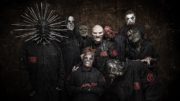When you don’t know the answer, experiment.
California Air Resources Board engineer Earl Withycombe practiced that tenet on a mostly wind-free Thursday night, as he threw clumps of corn starch at the business end of an ignited butane torch.
His goal was to replicate the conditions that would take place Saturday morning in Sacramento, where hundreds of people are expected to take part in The Color Run. The popular, worldwide event seasons a 5-kilometer jaunt with blasts of dry paint made from a concoction of food-coloring dye, corn starch and baking soda.
After watching video taken from a Taiwan water park in June, when hundreds of attendees were seriously injured after plumes of paint dust ignited into a fireball, Withycombe feared the same thing could happen here.
So he experimented.
From about eight feet away, he threw small handfuls of store-bought corn starch into the flame of a butane burner mounted about two feet off the ground. He did this 10 times. Eight of those times, the flame grew to twice its size when corn starch passed directly through the flame.
On two occasions, there were only small flare-ups.
“As a result of this test, I feel that the chances of a small fireball occurring … are small from corn starch simply being hand-thrown into the air,” he wrote in an email following his experiment, a recording of which he sent to SN&R. (The video turned out pretty dark, which is why we’re not posting it here.)
Withycombe also reviewed documents sent by Color Run officials, purportedly showing their dry paint recipe had passed numerous flammability tests.
In the email, Color Run president Frank Karbe reiterated his company’s commitment to safety.
“While we have a great track record with over 500 events and millions of color runners around the globe without a single fire related incident we have taken the Taiwan incident very serious and consulted with various experts to evaluate what actions we could take to address any potential concerns one might have,” he wrote.
After reviewing a July 2013 sieve analysis of “Mikrokonfetti,” conducted by Wilhelm-Jost-Institut (which was, frankly, way over my head), Withycombe said he still had concerns about the powder’s respiratory risks, especially to those with breathing conditions like asthma.
He noted that the Mikroconfetti Safety Data Sheet contained warnings for people with astham or allergies, and recommended protection.
“I believe that these warnings are appropriate and that this type of material should not be released into the air very close to people’s breathing zones,” Withycombe wrote.
So there you have it. Take part in The Color Run. Just be ready to hold your breath.



